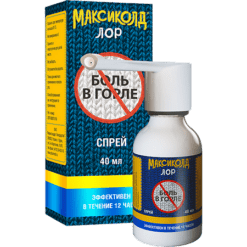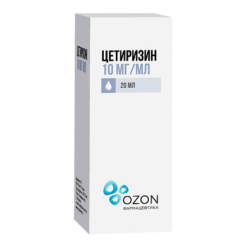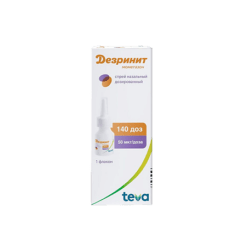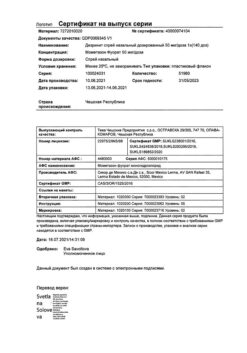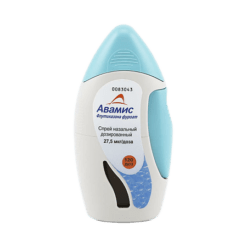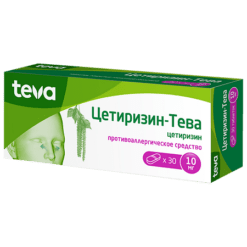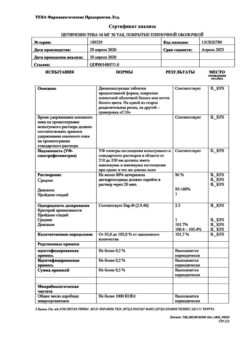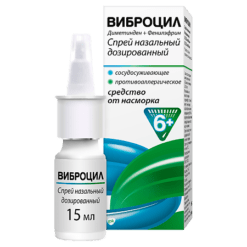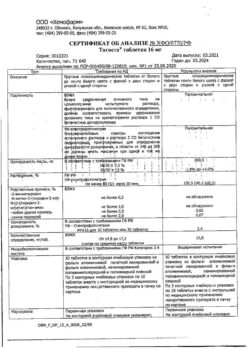No products in the cart.
Maxicold Lor Tabs Double Action, tablets 8.75mg+1 mg 20 pcs
€11.46 €9.55
Description
Pharmacological action Pharmacodynamics
Flurbiprofen is a derivative of propionic acid from the group of non-steroidal anti-inflammatory drugs (NSAIDs) and has significant analgesic, anti-inflammatory and antipyretic effect due to inhibition of cyclooxygenase-1 (COX-1) and cyclooxygenase-2 (COX-2), with some selectivity towards COX-1, resulting in reduced production of prostaglandins – mediators of pain, inflammation and hyperthermic response.
The drug has a local anesthetic and anti-inflammatory effect on the mucous membrane of the mouth and throat: it reduces swelling, difficulty in swallowing, pain and irritation in the throat.
Cetylpyridinium chloride is an antiseptic from the group of quaternary ammonium compounds with antimicrobial, antifungal and virulicidal action.
The combined use of flurbiprofen and cetylpyridinium chloride allows to achieve greater effectiveness, in comparison with cetylpyridinium chloride, for sore throat caused by infections of the upper respiratory tract. The more pronounced effect of the combination is manifested in the form of a more rapid reduction in the manifestations of tonsillopharyngitis, as well as a faster and more pronounced reduction in the intensity of sore throat, within 1 hour and 2 hours after application of the drug.
Pharmacokinetics Flurbiprofen
The degree of absorption is high, flurbiprofen is quickly and almost completely absorbed, distributed throughout the body and is largely bound to plasma proteins. Flurbiprofen is detected in blood after 5 min, maximum flurbiprofen concentration in blood plasma (Cmax) is reached after 40-45 min after resorption.
Flurbiprofen can be absorbed in the oral cavity by passive diffusion. Absorption rate depends on the dosage form; Cmax of flurbiprofen is reached faster with resorption than with oral administration of the equivalent dose of flurbiprofen.
The half-life (T½) is 3-6 hours. Flurbiprofen is excreted with breast milk in insignificant amounts (< 0.05 µg/ml). It is metabolized in the liver by hydroxylation. It is excreted by kidneys and, to a lesser extent, with bile. About 20-25% of the oral dose of flurbiprofen is excreted unchanged.
Cetylpyridinium chloride
It has local action and is practically not absorbed through the oral mucosa.
Indications
Indications
As a symptomatic remedy to relieve sore throat in infectious and inflammatory diseases of the oral cavity and pharynx.
Pharmacological effect
Pharmacological effect
Pharmacological action
Pharmacodynamics
Flurbiprofen is a derivative of propionic acid from the group of non-steroidal anti-inflammatory drugs (NSAIDs) and has a significant analgesic, anti-inflammatory and antipyretic effect due to the suppression of cyclooxygenase-1 (COX-1) and cyclooxygenase-2 (COX-2), with some selectivity towards COX-1, resulting in a decrease in the production of prostaglandins – mediators of pain, inflammation and hyperthermic reaction.
The drug has a local analgesic and anti-inflammatory effect on the mucous membrane of the mouth and throat: it reduces swelling, difficulty swallowing, pain and irritation in the throat.
Cetylpyridinium chloride is an antiseptic from the group of quaternary ammonium compounds, has antimicrobial, antifungal and virucidal effects.
The combined use of flurbiprofen and cetylpyridinium chloride allows achieving higher effectiveness, compared with cetylpyridinium chloride, for sore throat caused by upper respiratory tract infections. A more pronounced effect of the combination manifests itself in the form of a more rapid reduction in the manifestations of tonsillopharyngitis, as well as in the form of a faster and more pronounced decrease in the intensity of sore throat, within 1 hour and 2 hours after using the drug.
Pharmacokinetics
Flurbiprofen
The degree of absorption is high, flurbiprofen is quickly and almost completely absorbed, distributed throughout the body and is largely bound to plasma proteins. Flurbiprofen is detected in the blood within 5 minutes, the maximum concentration of flurbiprofen in the blood plasma (Cmax) is achieved 40-45 minutes after resorption.
Flurbiprofen can be absorbed from the oral cavity by passive diffusion. The rate of absorption depends on the dosage form; when absorbed, the Cmax of flurbiprofen is achieved faster than when an equivalent dose of flurbiprofen is taken orally.
The half-life (T½) is 3-6 hours. Flurbiprofen is excreted in breast milk in small quantities (<0.05 mcg/ml). Metabolized in the liver by hydroxylation. Excreted by the kidneys and, to a lesser extent, with bile. Approximately 20-25% of an oral dose of flurbiprofen is excreted unchanged.
Cetylpyridinium chloride
It has a local effect and is practically not absorbed through the oral mucosa.
Special instructions
Special instructions
It is recommended to take the drug for the shortest possible course and in the minimum effective dose necessary to eliminate symptoms.
When symptoms of gastropathy appear, careful monitoring is indicated, including esophagogastroduodenoscopy, a complete blood count (hemoglobin determination), and a stool test for occult blood.
If it is necessary to determine 17-ketosteroids, the drug should be discontinued 48 hours before the study.
During the treatment period, ethanol intake is not recommended.
Patients with renal or hepatic insufficiency, as well as elderly patients and patients taking diuretics, should consult a doctor before using the drug, as there is a risk of deterioration in renal function. With short-term use of the drug, the risk is negligible.
Patients with arterial hypertension, including a history of and/or chronic heart failure, should consult a doctor before using the drug, since the drug may cause fluid retention, increased blood pressure and edema.
Information for women planning pregnancy: the drug inhibits cyclooxygenase and prostaglandin synthesis and may affect ovulation, disrupting female reproductive function (reversible after discontinuation of treatment).
If irritation occurs in the oral cavity, skin rash, damage to the mucous membrane or other manifestations of an allergic reaction, you should stop using the drug and consult a doctor.
If there is no effect after 3 days of therapy, as well as in case of worsening of existing symptoms or the appearance of new ones, including signs of a bacterial infection, you should immediately consult a doctor to review therapy.
If it is necessary to use the drug simultaneously with antipyretics, you should avoid taking NSAIDs due to a possible increase in the risk of side effects and choose drugs from other pharmacological groups (for example, paracetamol).
The drug MAXICOLD® ENT TABS DOUBLE ACTION should not be used in the presence of open wounds in the oral cavity, since cetylpyridinium chloride slows down wound healing.
Cetylpyridinium chloride is not an antimicrobial (antibacterial) agent – it is an antiseptic; resistance to it does not develop.
Effect on the ability to drive vehicles or operate machinery
If you experience dizziness, drowsiness, lethargy or blurred vision while taking the drug, you should avoid driving vehicles or operating machinery.
Active ingredient
Active ingredient
Flurbiprofen, Cetylpyridinium chloride
Composition
Composition
For one tablet
Active ingredients: flurbiprofen – 8.75 mg, cetylpyridinium chloride monohydrate – 1.05 mg (in terms of cetylpyridinium chloride – 1.00 mg).
Excipients: povidone – 20.80 mg, levomenthol – 3.00 mg, pectin – 5.80 mg, eucalyptus globulus leaf oil – 1.00 mg, citric acid monohydrate – 8.30 mg, mint flavor * – 13.80 mg, sucralose – 5.00 mg, lactose monohydrate – 153.80 mg, polysorbate-80 – 3.00 mg, sorbitol – 760.70 mg, colloidal silicon dioxide – 5.00 mg, magnesium stearate – 10.00 mg.
* Flavoring composition: aromatic ingredients, gum arabic (E414) – 71.5%, maltodextrin – 3.7%, lactose – 3.6%.
Pregnancy
Pregnancy
Pregnancy
The use of the drug is contraindicated in the third trimester of pregnancy. You should avoid using the drug in the 1st–2nd trimester of pregnancy; if you need to use the drug, you should consult your doctor.
Breastfeeding period
The use of the drug during breastfeeding is contraindicated. If it is necessary to use the drug during breastfeeding, breastfeeding should be stopped.
Before using the drug, if you are pregnant or think you might be pregnant, or are planning a pregnancy, you should consult your doctor.
Contraindications
Contraindications
Hypersensitivity to the components of the drug;
a history of hypersensitivity reactions (bronchial asthma, bronchospasm, rhinitis, Quincke’s edema, urticaria, recurrent polyposis of the nose or paranasal sinuses) in response to the use of acetylsalicylic acid or other NSAIDs;
erosive and ulcerative diseases of the gastrointestinal tract (GIT) (including peptic ulcer of the stomach and duodenum, Crohn’s disease, ulcerative colitis) or ulcerative bleeding in the acute phase or in history (two or more confirmed episodes of peptic ulcer or ulcerative bleeding);
a history of bleeding or perforation of a gastrointestinal ulcer caused by the use of NSAIDs;
hemophilia and other blood clotting disorders (including hypocoagulation), hemorrhagic diathesis;
severe liver failure or active liver disease;
severe renal failure (creatinine clearance (CC)) < 30 ml/min);
decompensated heart failure;
period after coronary artery bypass surgery;
pregnancy (III trimester);
breastfeeding period;
confirmed hyperkalemia;
deficiency of glucose-6-phosphate dehydrogenase;
children under 18 years of age (due to lack of experience in medical use in children).
If you have one or more of the diseases and conditions listed above, you should consult your doctor before starting use.
With caution
When taking other NSAIDs simultaneously; a history of a single episode of gastric ulcer or gastrointestinal ulcer bleeding; gastrointestinal diseases in the anamnesis (ulcerative colitis, Crohn’s disease), gastritis, enteritis, colitis, the presence of Helicobacter pylori infection, bronchial asthma or allergic diseases in the acute stage or in the anamnesis (possible development of bronchospasm); systemic lupus erythematosus or mixed connective tissue disease (Sharpe’s syndrome), since the risk of aseptic meningitis is increased (with short-term use of flurbiprofen the risk is negligible); renal failure, including dehydration (creatinine clearance less than 30–60 ml/min), nephrotic syndrome; liver failure; liver cirrhosis with portal hypertension; hyperbilirubinemia; arterial hypertension and/or heart failure, edema; simultaneous use of drugs that may increase the risk of ulcers or bleeding, in particular oral glucocorticosteroids (including prednisolone), anticoagulants (including warfarin), antiplatelet agents (including acetylsalicylic acid, clopidogrel), selective serotonin reuptake inhibitors (including citalopram, fluoxetine, paroxetine, sertraline); in the first and second trimesters of pregnancy; elderly patients; when drinking alcohol.
If you have one or more of the diseases and conditions listed above, you should consult your doctor before starting use.
Side Effects
Side Effects
The risk of side effects can be minimized if the drug is taken in a short course at the minimum effective dose required to eliminate symptoms.
The incidence of adverse drug reactions is determined in accordance with the WHO classification: very often (≥1/10), often (from ≥1/100 to <1/10), infrequently (from ≥1/1,000 to <1/100), rarely (from ≥1/10,000 to <1/1,000), very rarely (<1/10,000), frequency unknown (cannot be determined from available data).
Blood and lymphatic system disorders
Frequency unknown: hematopoietic disorders (anemia, thrombocytopenia).
Immune system disorders
Rarely: anaphylactic reactions.
Mental disorders
Uncommon: insomnia.
Nervous system disorders
Common: dizziness, headache, paresthesia.
Uncommon: drowsiness.
Heart disorders
Frequency unknown: heart failure, edema.
Vascular disorders
Frequency unknown: increased blood pressure.
Respiratory, thoracic and mediastinal disorders
Common: feeling of irritation in the throat.
Uncommon: exacerbation of asthma and bronchospasm, shortness of breath, wheezing, blisters in the mouth and throat, pharyngeal hypoesthesia (decreased sensitivity in the mouth and throat).
Gastrointestinal disorders
Common: diarrhea, oral ulceration, nausea, oral pain, oral paresthesia, oral and pharyngeal pain, oral discomfort (warmth, burning or tingling sensation in the mouth).
Uncommon: bloating, abdominal pain, constipation, dry mouth, dyspepsia, flatulence, glossalgia (burning mouth syndrome), dysgeusia (change in taste perception), oral dysesthesia, vomiting.
Disorders of the liver and biliary tract
Frequency unknown: hepatitis.
Skin and subcutaneous tissue disorders
Uncommon: skin rash, itching.
Very rare: hypersensitivity reactions including irritation and skin rash.
Not known: severe skin reactions such as bullous reactions including Stevens-Johnson syndrome and toxic epidermal necrolysis (Lyell’s syndrome).
Other
Uncommon: fever, pain.
If any of the side effects indicated in the instructions get worse or you notice any other side effects not listed in the instructions, tell your doctor.
Interaction
Interaction
Flurbiprofen
Concomitant use with the following drugs should be avoided:
Acetylsalicylic acid: with the exception of low doses of acetylsalicylic acid (no more than 75 mg per day) prescribed by a doctor, since combined use may increase the risk of side effects.
Other NSAIDs, including ibuprofen and selective cyclooxygenase-2 inhibitors: The simultaneous use of two or more NSAIDs should be avoided due to a possible increased risk of side effects.
Use with caution simultaneously with the following medications and agents:
Anticoagulants: NSAIDs may enhance the effect of anticoagulants, in particular warfarin.
Antiplatelet agents and selective serotonin reuptake inhibitors: increased risk of gastrointestinal bleeding.
Antihypertensives (ACE inhibitors and angiotensin II antagonists) and diuretics: NSAIDs may reduce the effectiveness of these drugs and may increase nephrotoxicity due to cyclooxygenase inhibition, especially in patients with impaired renal function (it is necessary to ensure adequate fluid replacement in such patients).
Alcohol: may increase the risk of adverse reactions, especially bleeding in the gastrointestinal tract.
Cardiac glycosides: simultaneous use with NSAIDs can lead to worsening heart failure, a decrease in glomerular filtration rate and an increase in the concentration of cardiac glycosides in the blood plasma.
Cyclosporine: increased risk of nephrotoxicity when used concomitantly with NSAIDs.
Glucocorticosteroids: increased risk of gastrointestinal ulcers and gastrointestinal bleeding.
Lithium preparations: there is evidence of the likelihood of an increase in the concentration of lithium in the blood plasma during the use of NSAIDs.
Methotrexate: there is evidence of the likelihood of an increase in the concentration of methotrexate in the blood plasma during the use of NSAIDs. It is necessary to take NSAIDs 24 hours before or after taking methotrexate.
Mifepristone: NSAIDs should be started no earlier than 8 to 12 days after stopping mifepristone, as NSAIDs may reduce the effectiveness of mifepristone.
Quinolone antibiotics: when used together with NSAIDs, the risk of seizures may increase.
Tacrolimus: When used concomitantly with NSAIDs, there may be an increased risk of nephrotoxicity.
Zidovudine: Concomitant use with NSAIDs may lead to increased hematotoxicity.
Oral hypoglycemic drugs: possible changes in blood glucose levels (it is recommended to increase the frequency of monitoring blood glucose levels).
Phenytoin: an increase in the serum level of phenytoin is possible (monitoring the serum level of phenytoin and, if necessary, dose adjustment is recommended).
Potassium-sparing diuretics: Concomitant use with flurbiprofen may lead to hyperkalemia.
Probenecid and sulfinpyrazone: may delay the elimination of flurbiprofen.
Tolbutamide and antacids: To date, studies have not shown an interaction between flurbiprofen and tolbutamide or antacids.
Cetylpyridinium chloride
It should not be used simultaneously with milk, since this reduces the antimicrobial activity of cetylpyridinium chloride.
If you are using the medications listed above or other medications (including over-the-counter medications), consult your doctor before using MAXICOLD® ENT TABS DOUBLE ACTION.
Overdose
Overdose
Considering the amount of active substance contained in one lozenge, the possibility of overdose is minimal.
Flurbiprofen
Symptoms: nausea, vomiting, epigastric pain or, less commonly, diarrhea, tinnitus, headache and gastrointestinal bleeding. In severe cases, manifestations from the central nervous system are observed: drowsiness, rarely – agitation, convulsions, disorientation, coma. In cases of severe poisoning, metabolic acidosis and increased prothrombin time, acute renal failure, liver tissue damage, decreased blood pressure, respiratory depression and acidosis may develop. In patients with bronchial asthma, exacerbation of this disease is possible.
Treatment
Symptomatic, with mandatory maintenance of airway patency, monitoring of ECG and vital signs until the patient’s condition is normalized. Oral use of activated charcoal or gastric lavage is recommended within one hour after taking a potentially toxic dose of flurbiprofen. Frequent or prolonged seizures should be treated with intravenous diazepam or lorazepam. When bronchial asthma worsens, the use of bronchodilators is recommended. There is no specific antidote to flurbiprofen.
Cetylpyridinium chloride
Symptoms
Signs and symptoms of intoxication that may develop as a result of ingestion of significant amounts of cetylpyridinium chloride include: nausea, vomiting, shortness of breath, cyanosis, asphyxia with possible subsequent development of paralysis of the respiratory muscles, central nervous system (CNS) depression, hypotension and coma. The lethal dose in humans is approximately 1–3 g.
Treatment
Due to the lack of a specific antidote to cetylpyridinium chloride, treatment of acute overdose of cetylpyridinium chloride is symptomatic.
If symptoms of overdose appear, stop taking the drug and consult a doctor immediately.
Storage conditions
Storage conditions
Store at a temperature not exceeding 25 °C in the original packaging (blister packaging in a pack).
Keep out of the reach of children.
Shelf life
Shelf life
2 years.
Do not use after the expiration date stated on the package.
Manufacturer
Manufacturer
Pharmstandard-Leksredstva, Russia
Additional information
| Shelf life | 2 years. Do not use after the expiration date printed on the package. |
|---|---|
| Conditions of storage | Store at the temperature not more than 25 °C in the original package (carton pack in the package). Store out of reach of children. |
| Manufacturer | Pharmstandard-Leksredstva, Russia |
| Medication form | lozenges |
| Brand | Pharmstandard-Leksredstva |
Other forms…
Related products
Buy Maxicold Lor Tabs Double Action, tablets 8.75mg+1 mg 20 pcs with delivery to USA, UK, Europe and over 120 other countries.



